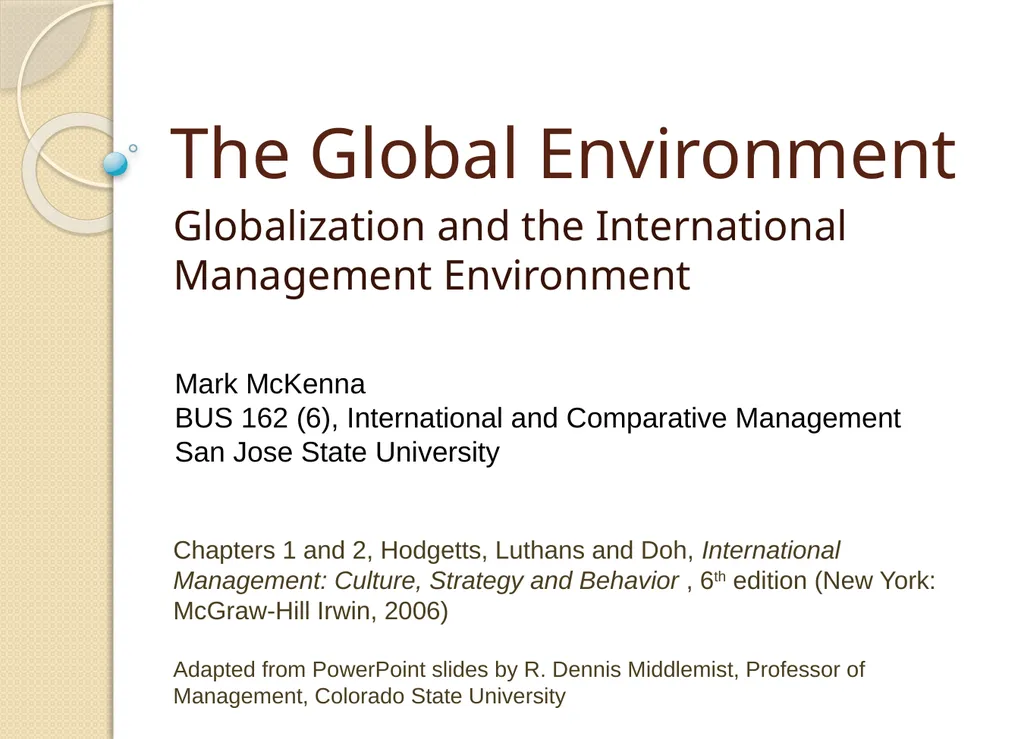
The Global Environment Globalization and the
Author: trish-goza | Published: 2025-05-28
Description: The Global Environment Globalization and the International Management Environment Chapters 1 and 2, Hodgetts, Luthans and Doh, International Management: Culture, Strategy and Behavior , 6th edition (New York: McGraw-Hill Irwin, 2006)
Download Presentation
Download the PPT/PDF: Download
Transcript:
Loading transcript…